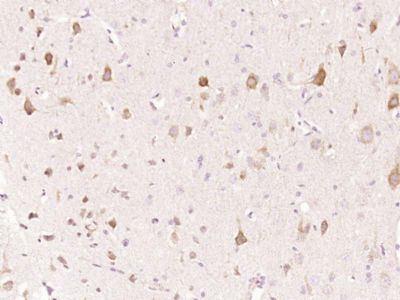This gene encodes the small subunit of a p53-inducible ribonucleotide reductase. This heterotetrameric enzyme catalyzes the conversion of ribonucleoside diphosphates to deoxyribonucleoside diphosphates. The product of this reaction is necessary for DNA synthesis. Mutations in this gene have been associated with autosomal recessive mitochondrial DNA depletion syndrome, autosomal dominant progressive external ophthalmoplegia-5, and mitochondrial neurogastrointestinal encephalopathy. Alternatively spliced transcript variants have been described.[provided by RefSeq, Feb 2010].
Function:
Plays a pivotal role in cell survival by repairing damaged DNA in a p53/TP53-dependent manner. Supplies deoxyribonucleotides for DNA repair in cells arrested at G1 or G2. Contains an iron-tyrosyl free radical center required for catalysis. Forms an active ribonucleotide reductase (RNR) complex with RRM1 which is expressed both in resting and proliferating cells in response to DNA damage.
Subunit:
Heterotetramer with large (RRM1) subunit. Interacts with p53/TP53. Interacts with RRM1 in response to DNA damage.
Subcellular Location:
Cytoplasm. Nucleus. Translocates from cytoplasm to nucleus in response to DNA damage.
Tissue Specificity:
Widely expressed at a high level in skeletal muscle and at a weak level in thymus. Expressed in epithelial dysplasias and squamous cell carcinoma.
DISEASE:
Mitochondrial DNA depletion syndrome 8A (MTDPS8A) [MIM:612075]: A disorder due to mitochondrial dysfunction characterized by various combinations of neonatal hypotonia, neurological deterioration, respiratory distress, lactic acidosis, and renal tubulopathy. Note=The disease is caused by mutations affecting the gene represented in this entry.
Mitochondrial DNA depletion syndrome 8B (MTDPS8B) [MIM:612075]: A disease due to mitochondrial dysfunction and characterized by ophthalmoplegia, ptosis, gastrointestinal dysmotility, cachexia, peripheral neuropathy. Note=The disease is caused by mutations affecting the gene represented in this entry.
Progressive external ophthalmoplegia with mitochondrial DNA deletions autosomal dominant 5 (PEOA5) [MIM:613077]: A disorder characterized by progressive weakness of ocular muscles and levator muscle of the upper eyelid. In a minority of cases, it is associated with skeletal myopathy, which predominantly involves axial or proximal muscles and which causes abnormal fatigability and even permanent muscle weakness. Ragged-red fibers and atrophy are found on muscle biopsy. A large proportion of chronic ophthalmoplegias are associated with other symptoms, leading to a multisystemic pattern of this disease. Additional symptoms are variable, and may include cataracts, hearing loss, sensory axonal neuropathy, ataxia, depression, hypogonadism, and parkinsonism. Note=The disease is caused by mutations affecting the gene represented in this entry.
Similarity:
Belongs to the ribonucleoside diphosphate reductase small chain family.
SWISS:
Q7LG56
Gene ID:
50484
Database links:
Entrez Gene: 50484 Human
Entrez Gene: 382985 Mouse
Entrez Gene: 299976 Rat
Omim: 604712 Human
SwissProt: Q7LG56 Human
SwissProt: Q6PEE3 Mouse
Unigene: 512592 Human
Unigene: 24738 Mouse
| Picture |
Paraformaldehyde-fixed, paraffin embedded (Rat brain); Antigen retrieval by boiling in sodium citrate buffer (pH6.0) for 15min; Block endogenous peroxidase by 3% hydrogen peroxide for 20 minutes; Blocking buffer (normal goat serum) at 37°C for 30min; Antibody incubation with (p53R2) Polyclonal Antibody, Unconjugated (SL4181R) at 1:500 overnight at 4°C, followed by a conjugated secondary (sp-0023) for 20 minutes and DAB staining.
|
|
|
